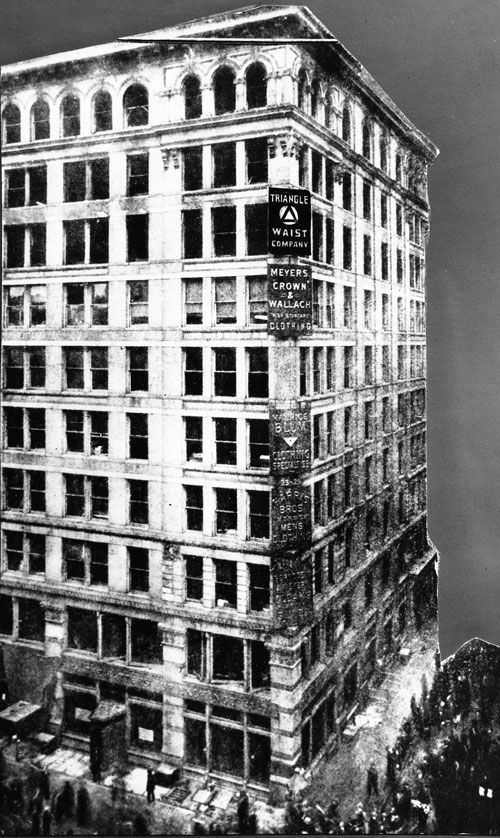Cross posted from The Stars Hollow Gazette
 Some of the most important changes that resulted from the tragic deaths at the Triangle Shirtwaist Factory Fire were the reforms to work place health and safety conditions. Modern buildings now must conform to fire safety and occupancy standards. The Asch building loft were 500 women labored at overcrowded worktables did not have a sprinkler system, the exits were inadequate and locked, the passages were narrow and blocked and the fire escapes were unsafe. The fire compelled New York City to create the Bureau of Fire Prevention, which required stairwells, fire alarms, extinguishers and hoses be installed in all buildings and regularly conducts building inspection to insure compliance. The Bureau also determines maximum occupancy. The year after the fire the NY the legislature passed eight bills addressing workplace sanitation, injury on the job, rest periods and child labor. In 1913, the Factory Investigating Commission recommended that 25 new bills be passed mandating fireproof stairways and the safe construction of fire escapes, that doorways be a certain number of feet wide, and that older multi-storied buildings be inspected. In 1916, smoking was also outlawed in factories.
Some of the most important changes that resulted from the tragic deaths at the Triangle Shirtwaist Factory Fire were the reforms to work place health and safety conditions. Modern buildings now must conform to fire safety and occupancy standards. The Asch building loft were 500 women labored at overcrowded worktables did not have a sprinkler system, the exits were inadequate and locked, the passages were narrow and blocked and the fire escapes were unsafe. The fire compelled New York City to create the Bureau of Fire Prevention, which required stairwells, fire alarms, extinguishers and hoses be installed in all buildings and regularly conducts building inspection to insure compliance. The Bureau also determines maximum occupancy. The year after the fire the NY the legislature passed eight bills addressing workplace sanitation, injury on the job, rest periods and child labor. In 1913, the Factory Investigating Commission recommended that 25 new bills be passed mandating fireproof stairways and the safe construction of fire escapes, that doorways be a certain number of feet wide, and that older multi-storied buildings be inspected. In 1916, smoking was also outlawed in factories.
Frances Perkins, who would later become Franklin D. Roosevelt‘s Secretary of Labor, witnessed the women jumping from the windows that day. She would later comment that it was “the day the New Deal began.” In the ’30s, the New Deal included many of these provisions on the federal level. In 1933, Congress passed the National Industrial Recovery Act which also protected collective bargaining rights for unions.
